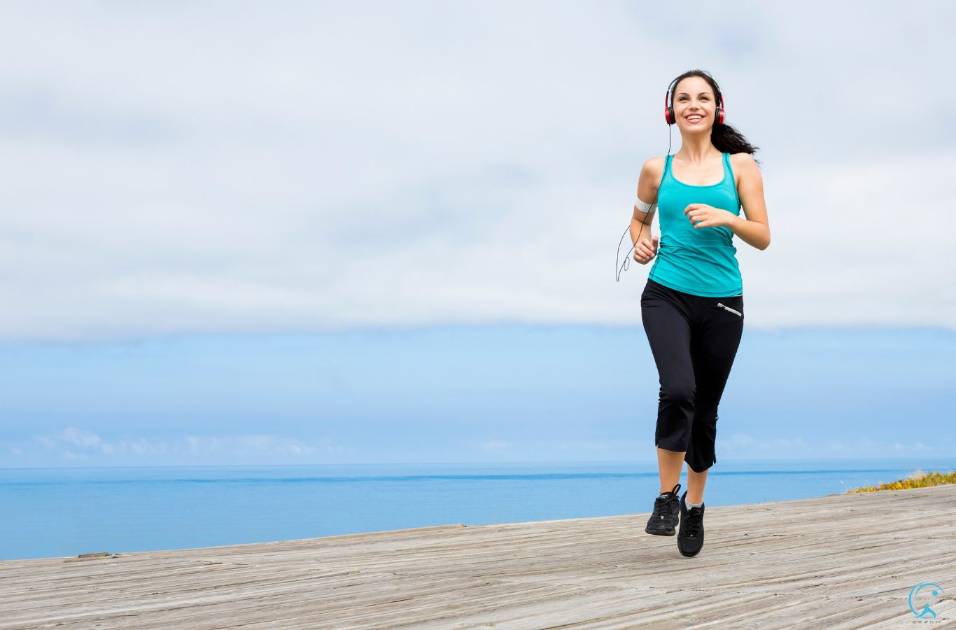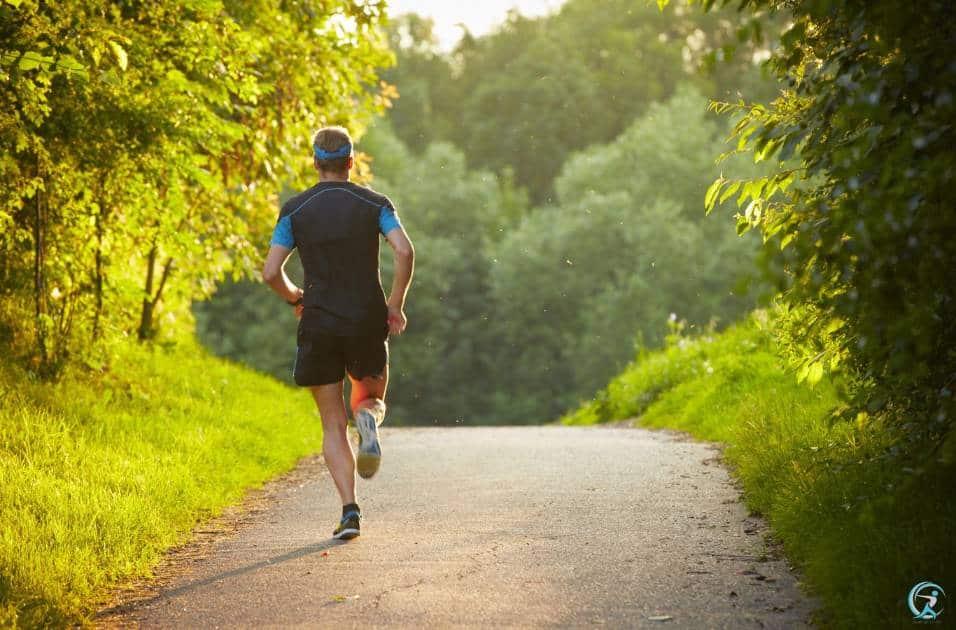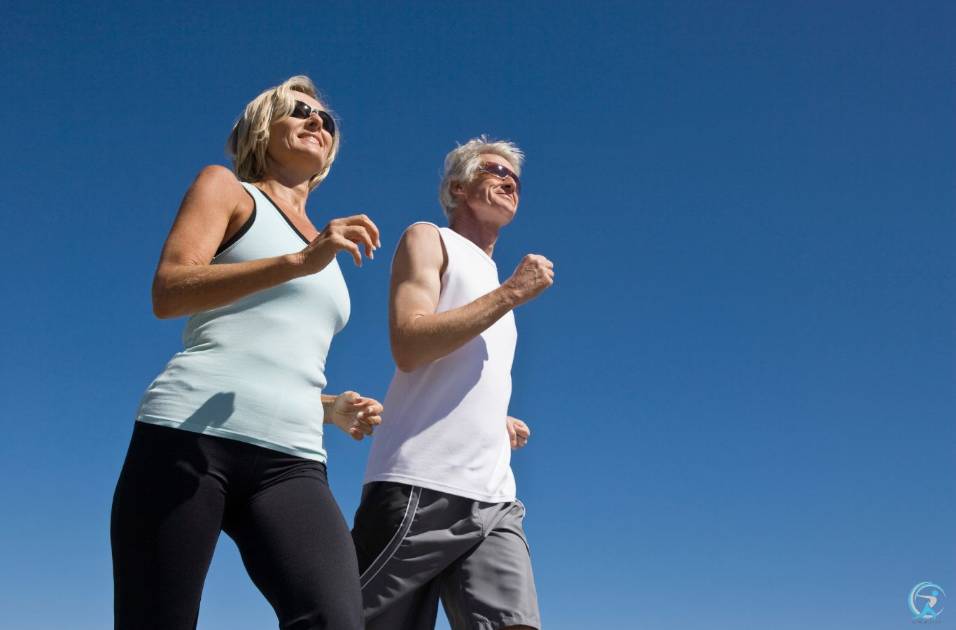Walking for weight loss is the most effective and enjoyable way to lose weight. Start walking to lose weight and feel great.
Walking is one of the simplest yet most effective forms of exercise for losing weight. Whether you walk outdoors or on a treadmill, this low-impact activity can help you burn calories, shed excess fat, boost your metabolism, and improve your overall health and fitness.
In this comprehensive guide, we will explore the proven benefits of walking for weight loss and provide practical tips on how to get started and stick with a walking routine. You’ll learn the science behind how walking helps you lose weight, the proper guidelines on intensity, duration, and frequency, strategies for overcoming challenges, and optimized tips for making your walks more enjoyable and effective.
By the end, you’ll have all the knowledge and motivation you need to begin incorporating walking into your lifestyle and reach your weight loss goals through this accessible, adaptable, and highly rewarding exercise.

The Science of Walking for Weight Loss
Walking is an effective way to lose weight because it helps create a calorie deficit, preserves your muscle mass, and reduces belly fat.
Walking for weight loss is a great way to burn calories, but it can be done in many different ways. Some people walk with friends or spouses, while others prefer to go alone. A brisk walk is one of the best ways to lose weight and keep it off. You may also consider jogging or running if you want an even more intense exercise regimen.
- Walking requires your body to expend energy, which means you burn calories. The number of calories you burn depends on your weight, pace, terrain, and other factors.
- For a 160 lb person, walking briskly at 4 mph for 60 minutes burns around 350 calories. Over time, this calorie deficit leads to weight loss.
- The more you weigh, the more calories you’ll burn per mile walked. Walking is low-impact so heavier persons can build up endurance.
The benefits of walking for weight loss
It Boosts Your Metabolism
- Walking helps build and maintain your muscle mass, because it uses all the major muscle groups. The more muscle you have, the higher your resting metabolism.
- As you walk, your muscles require energy and your body taps into fat stores. Having more muscle raises your daily calorie burn even when not active.
- Regular walking also helps manage blood sugar levels, which optimizes metabolism and decreases fat storage over time.
It Reduces Belly Fat
- Visceral fat or belly fat is the most dangerous type of fat and increases health risks. Walking is extremely effective for targeting a reduction in belly fat.
- Walking helps burn the deep subcutaneous fat while also building abdominal muscles. Having more abdominal muscles allows your stomach to stay tight as the fat reduces.
- In one study, people who walked for 60-90 minutes daily for a year lost 4-7% of their belly fat compared to non-walkers.
So in summary, the combination of burning calories, boosting metabolism, and reducing belly fat is what makes walking such a powerful weight loss tool. Let’s now look at the proper guidelines for walking to lose weight.

The Guidelines for Walking for Weight Loss
To lose weight effectively through walking, you need to follow some guidelines regarding the duration, frequency, intensity, and terrain of your walks. Here are the recommendations based on your goals and fitness level:
How Much You Should Walk
- For general health, aim for 150 minutes of moderate walking per week, such as 30 minutes 5 days a week.
- For weight loss, you may need 200-300 minutes per week, such as 45-60 minutes 5 days a week.
- For a substantial weight loss of more than 30 lbs, you may need to walk over 300 minutes per week, with some days longer than 60 minutes.
How Often You Should Walk
- Walking 5-7 days per week is best for weight loss. This creates a consistent calorie deficit.
- Walking daily allows you to burn calories through NEAT (non-exercise activity thermogenesis). The steps throughout your day contribute to weight loss.
- If daily walks are not possible, aim for 5 days a week as a minimum. The other 2 days focus on strength training, stretching, yoga, etc.

How Fast You Should Walk
- For beginners, start with a moderate walking pace of 3-3.5mph. This should feel like a brisk walk where you can still hold a conversation.
- As your fitness level improves, you can build up to 4-4.5mph for even more calorie burn. This vigorous pace raises your heart rate and breathing.
- Adding short intervals of faster walking such as 30 seconds of jogging followed by recovery walking helps maximize fat burning.
Where You Should Walk
- Walking outdoors provides varied terrain which engages different muscles compared to treadmill walking.
- Walking on hills, in intervals, and on soft surfaces like grass or sand increases the intensity and calories burned.
- Treadmill walking allows you to accurately measure pace, distance, and calories burned. You can include an incline to increase difficulty.
- Mixing up outdoor and treadmill walking combines the benefits of both for fitness gains.

So in summary, walk at least 5 days a week for 45-60 minutes at a brisk pace, while mixing up your terrain to maximize the fat burning benefits. Now let’s go over some of the challenges you may face while walking for weight loss.
The Challenges of Walking for Weight Loss
Adding regular walking into your routine requires commitment and motivation. Here are some of the top challenges people face and how to overcome them:
Finding the Time
- Schedule your walks like any other important appointment in your calendar so they don’t get pushed off.
- Wake up 30-60 minutes earlier to walk before your day starts. This boosts your energy too!
- Take walking breaks at work by strolling around outside or pacing while on the phone.
- Walk for at least 10 minutes during your lunch break to accumulate steps.
- Go for walks after dinner or on your evenings off to reach your daily goals.

So in summary, walk at least 5 days a week for 45-60 minutes at a brisk pace, while mixing up your terrain to maximize the fat burning benefits. Now let’s go over some of the challenges you may face while walking for weight loss.
The Challenges of Walking for Weight Loss
Adding regular walking into your routine requires commitment and motivation. Here are some of the top challenges people face and how to overcome them:
Finding the Time
- Schedule your walks like any other important appointment in your calendar so they don’t get pushed off.
- Wake up 30-60 minutes earlier to walk before your day starts. This boosts your energy too!
- Take walking breaks at work by strolling around outside or pacing while on the phone.
- Walk for at least 10 minutes during your lunch break to accumulate steps.
- Go for walks after dinner or on your evenings off to reach your daily goals.
Walk for at least 30 minutes most days of the week.
The best way to lose weight by walking is to do it consistently. To maximize your results, you should aim to walk for at least 30 minutes most days of the week. It’s important to remember that this is only one component of an overall healthy lifestyle, but it can be effective in helping you reach your goals if you work hard at making it part of your routine.
Walkers tend to focus on endurance and covering long distances, so they may not realize how much strength training is involved in their workout—but building up strength will help protect bone mass and reduce joint pain as we age. Walking is also great for heart health—people who walk regularly have lower rates of heart disease than people who don’t exercise! Walkers have better blood flow throughout their bodies, which keeps them more energized each day because they get enough oxygen into their muscles during exercise sessions.
Incorporate hills into your walking route.
Incorporating hills into your walking route is a great way to burn more calories and improve your overall fitness.
- Walking on a hill burns more calories than walking on flat ground. Hill training will increase your calorie burn by up to 25 percent.
- If you run, cycle, or swim regularly, incorporate hills into your fitness routine for extra calories burned and increased endurance.

Sprint for 30 seconds every 5 minutes.
Sprinting for 30 seconds every 5 minutes is a great way to burn more calories than simply walking. A study published in Medicine and Science in Sports and Exercise found that participants who used high-intensity interval training (HIIT), which involves short bursts of intense exercise followed by rest periods, lost significantly more weight than those who walked at a moderate pace for 30 minutes per day.
While you could go on a brisk run for half an hour as part of your daily routine, sprinting for just 30 seconds every five minutes can also be highly effective. This method allows you to burn more calories without major changes to your schedule or lifestyle.
Take the stairs instead of the elevator or escalator.
- Walking upstairs burns more calories than walking on the same level.
- By incorporating stair climbing into your daily routine, you’ll get more exercise in less time and burn a significant amount of fat in just one day.
- Stair climbing is also an excellent way to build leg strength and improve posture.
- Lastly, it’s a great cardio workout for people who have joint problems because it doesn’t require any impact on their knees or hips!
Walk or jog on an empty stomach to burn more fat.
There is a good reason for this. It’s because an empty stomach burns fat better than a full one does.
To optimize your weight loss with walking, make sure you eat breakfast at least 30 minutes before you go for a walk. That way, your body has enough time to burn the food off before you start moving around too much and depleting those glycogen stores. You could also try eating a small snack like an apple or banana before heading out if you don’t want to do this whole “eat breakfast” thing!

Wear a weight vest to burn more calories during your walk.
Wear a weight vest while walking. Athletes use a weighted vest to build endurance and power, but it can also help you lose weight by increasing the intensity of your walks. You can wear a weighted vest during exercise or use it as a recovery tool after strength training. The added resistance burns more calories than usual and works your muscles harder because of the increased load. This will help improve their strength and tone, leading to a better physique!
Weighted vests are perfect for people who don’t have access to much space for jogging or running outside because they provide similar benefits in smaller increments that can be done even indoors (watch out for those doorways).
Walk with good posture to maximize calorie burn and strengthen muscles.
When you’re walking for weight loss, good posture is essential. It helps you burn more calories and strengthen muscles at the same time. Good posture also makes you look and feel more confident, which can significantly affect your ability to stick with your exercise routine.
Good posture helps keep your back straight and shoulders pulled back, which helps align the spine and improve lung capacity by opening up airways. In addition to strengthening muscles all over the body, this improves circulation, balance, and coordination. The result? You’ll be able to walk farther without getting tired—which also means burning more calories!
Weather Obstacles
- Walk at indoor venues like the mall, a museum or community center on very hot, cold, or rainy days.
- Invest in proper cold-weather gear so you can walk comfortably in the winter without risking hypothermia or falls.
- Wake up early to walk in the summer before it gets too hot and humid.
- Stay hydrated and wear sunscreen when walking in the heat.
The key is to anticipate obstacles and have a plan to overcome them. With commitment and flexibility, you can make walking a regular habit.
The Tips for Walking for Weight Loss
Here are some optimized tips for making your walks as enjoyable, sustainable, and effective as possible:
Make It More Fun
- Pick scenic routes in natural settings like parks, beaches, rivers, and trails to immerse yourself in beautiful views. This engages your senses.
- Listen to your favorite upbeat music, podcasts, or audiobooks to entertain yourself and make the time pass quickly.
- Explore a new neighborhood or area each week so your walks never feel repetitive. Discovering new places piques your curiosity.
- Find a walking buddy, join a walking meetup group, or even virtually connect with others to walk together. Socializing makes exercise more fun.
Use Proper Technique
- Invest in a good pair of walking shoes with proper arch support and cushioning. Replace shoes every 300-500 miles.
- Warm up for 5-10 minutes with dynamic stretches to prepare your muscles and prevent injury. Cool down and stretch afterward too.
- Walk tall with good posture: head up, shoulders back, core braced. This engages your muscles properly.
- Swing your arms naturally as you walk and drive forward with your heels for maximum efficiency.
- Start slowly and gradually increase your pace, distance, and duration to prevent overuse injuries.
Complement With Other Exercise
- For weight loss, add 2-3 days per week of strength training to build calorie-burning muscle.
- Try yoga 1-2 days per week to build flexibility, balance, and recovery.
- Squeeze in HIIT workouts 2-3 times per week to really spike your metabolism.
Watch Your Diet
- Create a modest daily calorie deficit of 500 calories through diet and exercise.
- Focus on whole, fiber-rich foods that provide nutrients to fuel your walks.
- Stay hydrated before, during, and after your walks.
- Avoid empty-calorie foods that undermine your calorie deficit.
Walking combined with a sound nutrition plan accelerates weight loss while preserving lean muscle.
FAQs about walking and weight loss
How much should I walk to lose weight?
What is the best time of day to walk for weight loss?
Should I walk fast or slow for weight loss?
What should I eat when walking for weight loss?
How long until I see weight loss results from walking?
Conclusion
Walking is one of the healthiest, most accessible, and effective forms of exercise for losing weight and keeping it off long-term. By understanding the proven science behind walking for weight loss, following evidence-based guidelines, overcoming motivational barriers, and optimizing your technique, you can incorporate walking into your routine and achieve transformative results.
The benefits of improved cardiovascular health, stronger muscles, reduced body fat, and an enhanced mood and energy level make walking well worth the commitment. Start where you are, be patient with yourself, and gradually increase your walking frequency, intensity, and duration for the best chance of success.
You have nothing to lose except the unwanted pounds you’ve been carrying! Take that first step and begin your walking for weight loss journey today.
References
https://www.healthline.com/nutrition/walking-for-weight-loss
https://www.verywellfit.com/how-long-should-you-walk-to-lose-weight-3432706
https://www.mayoclinic.org/healthy-lifestyle/weight-loss/expert-answers/walking/faq-20058345
https://www.prevention.com/fitness/a20485587/how-to-start-walking-for-weight-loss/
As a veteran fitness technology innovator and the founder of GearUpToFit.com, Alex Papaioannou stands at the intersection of health science and artificial intelligence. With over a decade of specialized experience in digital wellness solutions, he’s transforming how people approach their fitness journey through data-driven methodologies.
